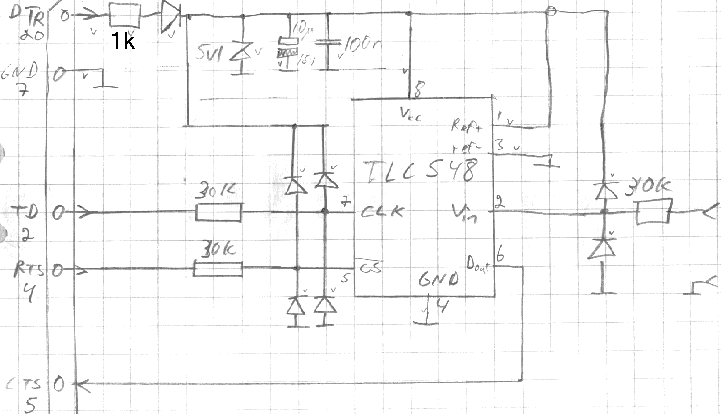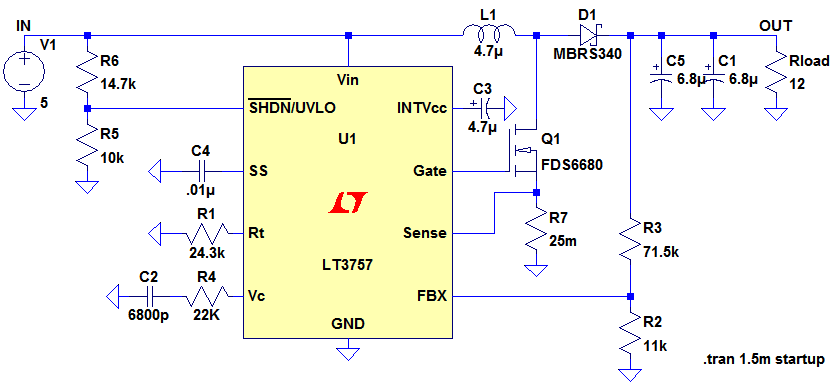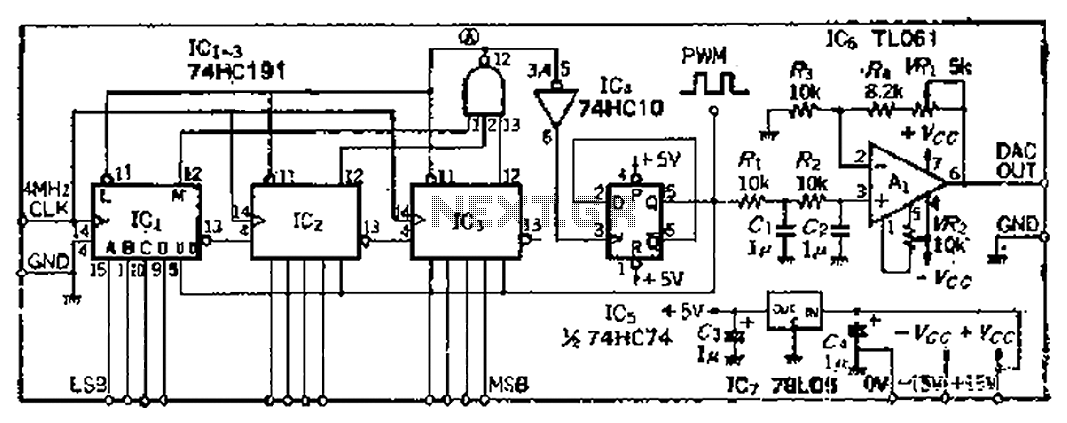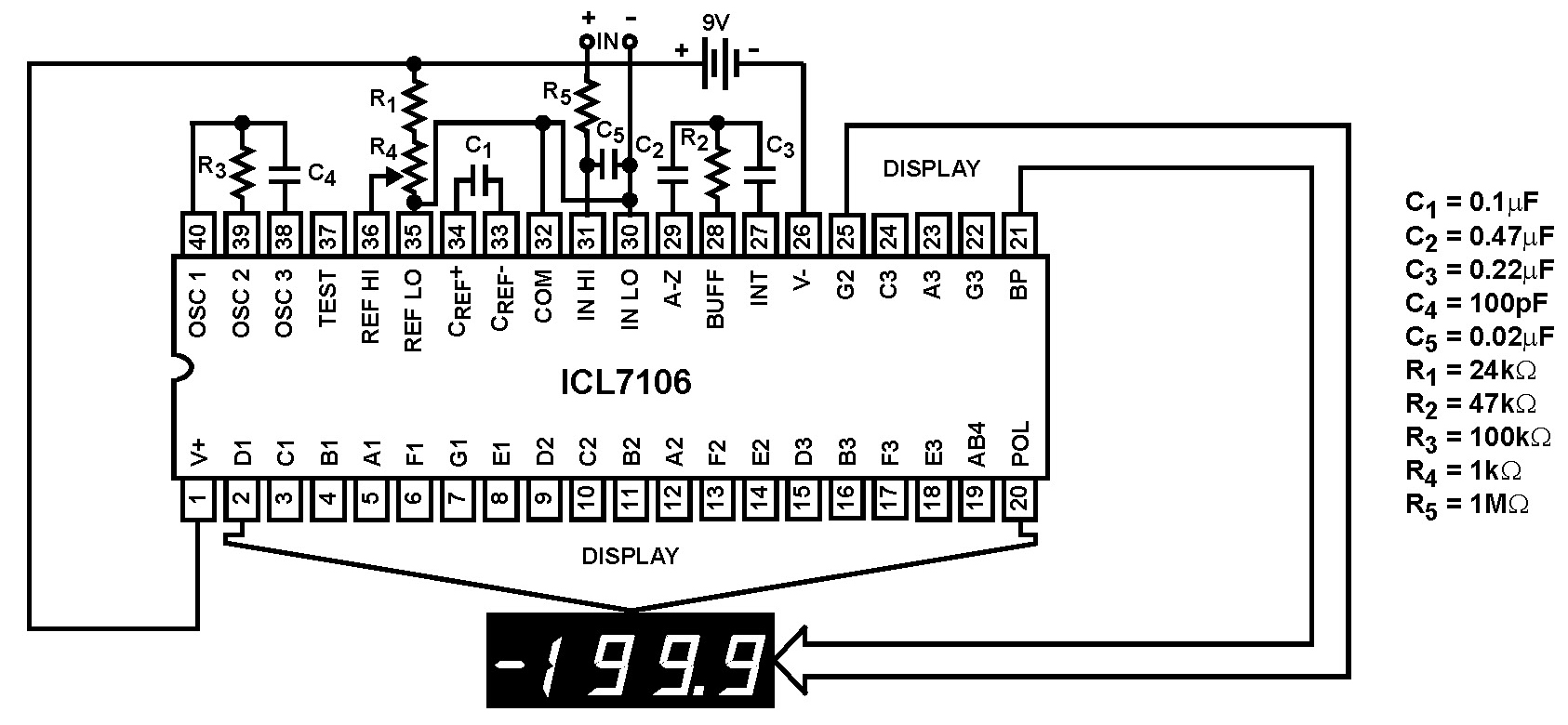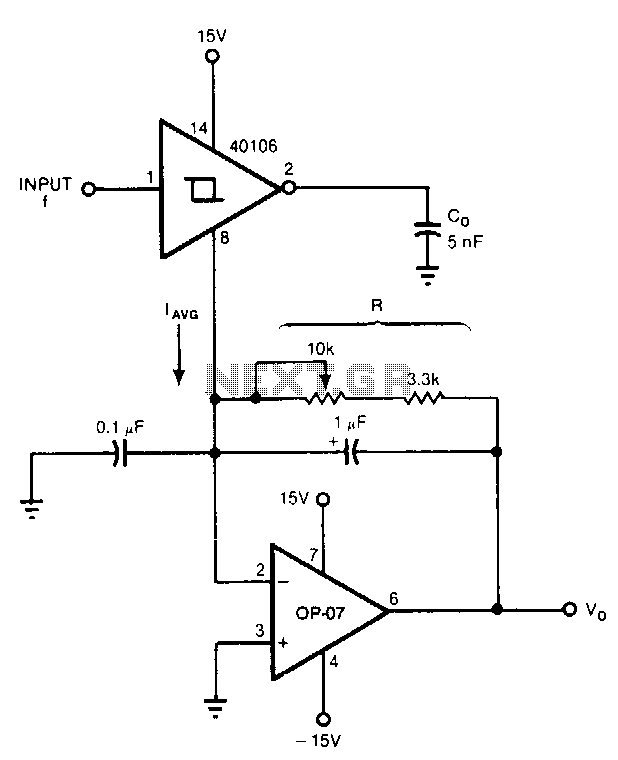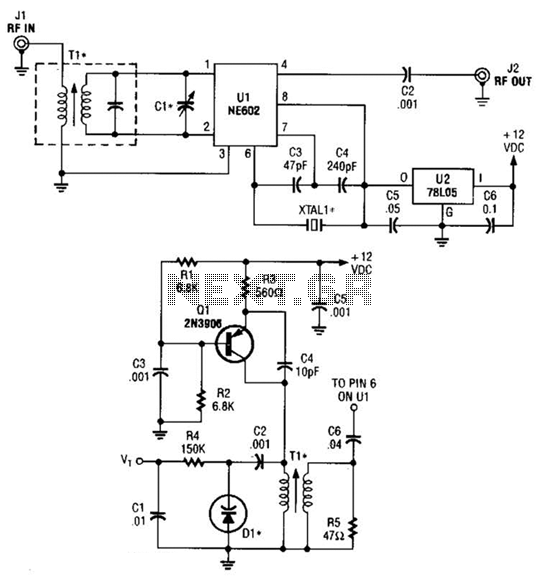
Oscilloscope converter
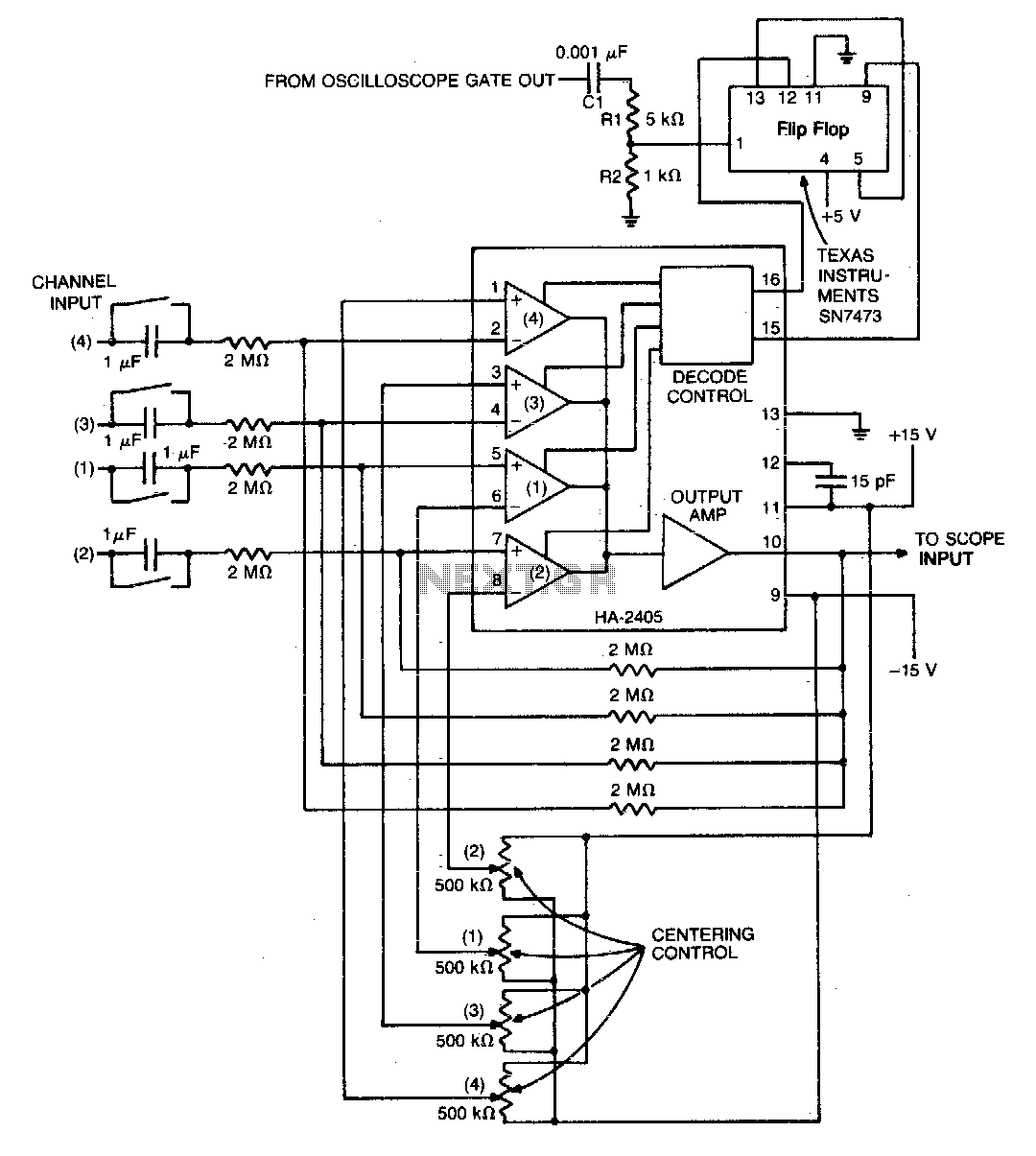
The monolithic quad operational amplifier offers a cost-effective solution for enhancing the display capabilities of a standard oscilloscope. Binary inputs control the integrated circuit operational amplifier, while a dual flip-flop divides the oscilloscope's gate output to generate channel selection signals. Each channel is equipped with centering controls to nullify offset voltage. A negative-going scope gate signal selects the subsequent channel after each trace, and the circuit operates effectively up to 5 MHz.
The described circuit utilizes a monolithic quad operational amplifier, which contains four independent, high-gain, frequency-compensated operational amplifiers. This configuration allows for multiple amplification stages within a single package, thereby reducing component count and associated costs. The integration of binary inputs facilitates the direct control of the operational amplifiers, enabling precise manipulation of the oscilloscope's display.
The dual flip-flop component serves a crucial role in channel selection by processing the gate output from the oscilloscope. This output is divided to create distinct channel selection signals that allow the user to switch between different input channels seamlessly. The design ensures that each channel can be independently controlled, enhancing the versatility of the oscilloscope.
Each channel features centering controls, which are essential for nulling any offset voltage present at the output. This adjustment capability ensures that the displayed waveforms are accurately centered within the oscilloscope's viewing area, improving the readability and precision of the measurements taken.
The circuit's operation is triggered by a negative-going scope gate signal, which initiates the channel selection process after each trace is completed. This feature is particularly beneficial for applications requiring rapid succession of measurements, as it allows for efficient cycling through multiple channels without manual intervention.
The operational bandwidth of this circuit extends up to 5 MHz, making it suitable for a wide range of applications in electronics testing and analysis. The combination of the quad operational amplifier and the dual flip-flop provides a robust and efficient solution for enhancing the functionality of standard oscilloscopes, thereby meeting the needs of engineers and technicians in various fields.The monolithic quad operational amplifier provides an inexpensive way to increase display capability of a standard oscilloscope. Binary inputs drive the IC op amp; a dual flip-flop divides the scope"s gate output to obtain channel selection signals.
All channels have centering controls for nulling offset voltage A negative-going scope gate signal selects the next channel after each trace. The circuit operates out to 5 MHz.
The described circuit utilizes a monolithic quad operational amplifier, which contains four independent, high-gain, frequency-compensated operational amplifiers. This configuration allows for multiple amplification stages within a single package, thereby reducing component count and associated costs. The integration of binary inputs facilitates the direct control of the operational amplifiers, enabling precise manipulation of the oscilloscope's display.
The dual flip-flop component serves a crucial role in channel selection by processing the gate output from the oscilloscope. This output is divided to create distinct channel selection signals that allow the user to switch between different input channels seamlessly. The design ensures that each channel can be independently controlled, enhancing the versatility of the oscilloscope.
Each channel features centering controls, which are essential for nulling any offset voltage present at the output. This adjustment capability ensures that the displayed waveforms are accurately centered within the oscilloscope's viewing area, improving the readability and precision of the measurements taken.
The circuit's operation is triggered by a negative-going scope gate signal, which initiates the channel selection process after each trace is completed. This feature is particularly beneficial for applications requiring rapid succession of measurements, as it allows for efficient cycling through multiple channels without manual intervention.
The operational bandwidth of this circuit extends up to 5 MHz, making it suitable for a wide range of applications in electronics testing and analysis. The combination of the quad operational amplifier and the dual flip-flop provides a robust and efficient solution for enhancing the functionality of standard oscilloscopes, thereby meeting the needs of engineers and technicians in various fields.The monolithic quad operational amplifier provides an inexpensive way to increase display capability of a standard oscilloscope. Binary inputs drive the IC op amp; a dual flip-flop divides the scope"s gate output to obtain channel selection signals.
All channels have centering controls for nulling offset voltage A negative-going scope gate signal selects the next channel after each trace. The circuit operates out to 5 MHz.
